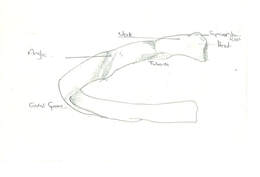 People ask me what I most often treat. The glib and osteopathic answer is 'people'. If I'm going to be reductionist and nominate a body part then ribs are surprisingly high up there. Why surprising? Well? How often do you think about your ribs? The amount of patients who say 'I have ribs at the back too?' or 'that far up/down'. You break them or bruise them but rib dysfunction with no traumatic onset? I'm being a little disingenuous here, because, most often it is not the rib itself that is the problem but the joint or joints attaching it to the spine and to the sternum (breastbone). Most people have 12 pairs of ribs.  The top pair are the 1st ribs, uniquely they only have one joint at the rear with the spine Ribs 2-7 have two joints at the rear, all of ribs 1-7 are true ribs and have a joint at the front with the breastbone Ribs 8-10 are false ribs, they don't come all the way to the front but join to cartilage which then combines and joins to the 7th rib Ribs 11 and 12 are floating ribs, they only have the two joints to the spine and the front end 'floats' but not very freely as t is held in place by muscles. So what can go wrong? Well the ribs are subject to loads of forces in different directions. Obviously they move when you breathe...you may never have thought of that..and when you move your thoracic spine they have to move to accommodate that and then there are the shoulder movements that basically require your ribcage to deform to accommodate those too. Each time a healthy rib moves all of the joints between it and your spine and sternum should move a little too, but like every other joint, they can get irritated, inflamed, restricted, stuck and the whole rib can end up out of synch with the spine and with the other ribs around it. Which can cause the joints to get very inflamed and painful. and can cause the muscle overlying the rib to be held on stretch for long periods, which then makes the muscle sore and or tight. So many of those 'knots' you get in your upper back between the shoulderblades are not knots at all but instead some muscle stretched over a prominent and unyielding rib below. Then there are the muscles between the ribs, you know, the tasty bit in spare ribs, they are intercostal muscles and can become too tight and feed into the dysfunction by pulling the ribs together unevenly like badly ruched curtains and then there are muscles attaching to the top and bottom ribs, at the top, particularly the scalenes, these are the muscles that run up the side of your neck and they attach to the first and second ribs, poor rib function there can lead to the scalenes becoming tight resulting a stiff and painful neck, not to mention the effect it can have on the nerve and blood supply to the arm. At the other end the 12th rib attaches to quadratus lumborum and psoas, as well as the diaphragm and dysfunction here can lead to low back pain, even hip problems and problems with the nerve supply into the leg. I rarely treat ribs in isolation but, I treat them with most patients and they deserve to have more attention paid to them in general
0 Comments
Your comment will be posted after it is approved.
Leave a Reply. |
Archives
February 2024
AuthorDamian is the principal osteopath at Vauxhall Village Osteopathy and Oval Osteopathy Categories
All
|


 RSS Feed
RSS Feed


